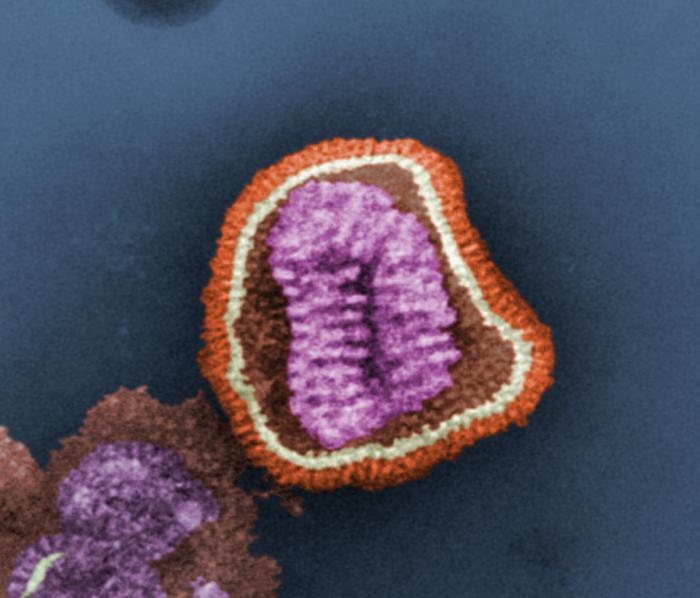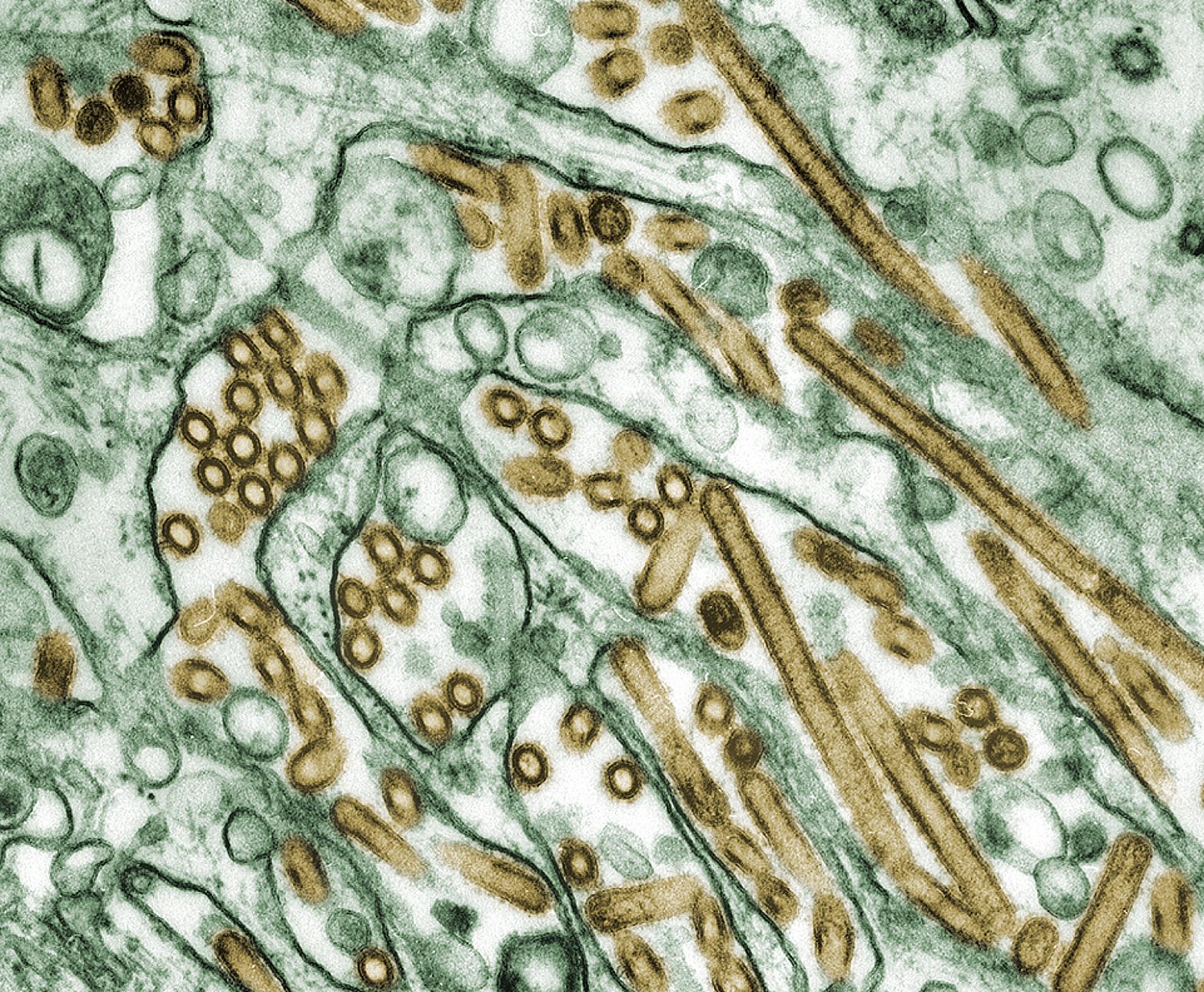Mutations in haemagglutinin that affect receptor binding and pH stability increase replication of a PR8 influenza virus with H5 HA in the upper respiratory tract of ferrets and may contribute to transmissibility
The H5N1 influenza A viruses have circulated widely in the avian population for 10 years with only sporadic infection of humans observed and no sustained human to human transmission. Vaccination against potential pandemic strains is one strategy in planning for future influenza pandemics; however, the success of live attenuated vaccines for H5N1 has been limited, due to poor replication in the human upper respiratory tract (URT). Mutations that increase the ability of H5N1 viruses to replicate in the URT will aid immunogenicity of these vaccines and provide information about humanizing adaptations in H5N1 strains that may signal transmissibility. As well as mediating receptor interactions, the haemagglutinin (HA) protein of influenza facilitates fusion of the viral membrane and genome entry into the host cell; this process is pH dependent. We have shown in this study that the pH at which a panel of avian influenza HA proteins, including H5, mediate fusion is higher than that for human influenza HA proteins, and that mutations in the H5 HA can reduce the pH of fusion. Coupled with receptor switching mutations, increasing the pH stability of the H5 HA resulted in increased viral shedding of H5N1 from the nasal cavity of ferrets and contact transmission to a co-housed animal. Ferret serum antibodies induced by infection with any of the mutated H5 HA viruses neutralized HA pseudotyped lentiviruses bearing homologous or heterologous H5 HAs, suggesting that this strategy to increase nasal replication of a vaccine virus would not compromise vaccine efficacy.
Back to publications

